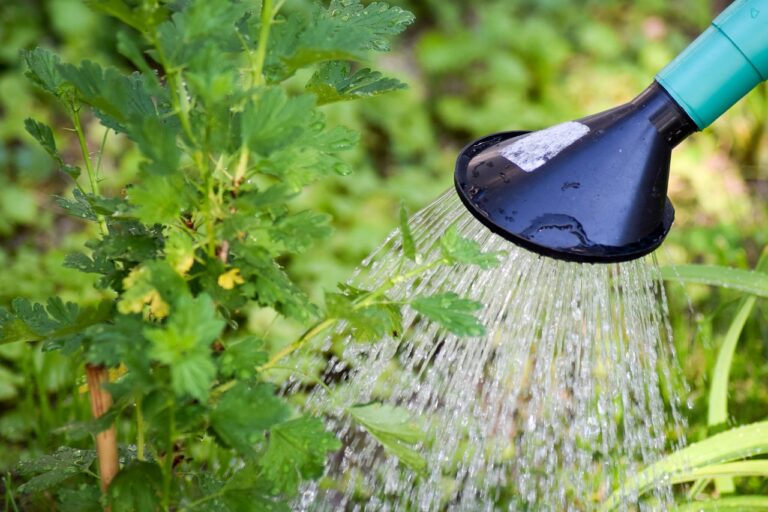Proper hydration and nutrition are vital for maintaining healthy plants. Whether you’re tending to indoor potted plants or cultivating a backyard garden, understanding the essential guidelines for watering and fertilizing can significantly impact your plants’ growth and vitality. This blog provides expert tips and recommendations to help you master these crucial aspects of plant care, ensuring your garden remains lush and robust throughout the seasons. From general rules to specific needs of various plant types, we’ll guide you through the processes that support thriving plant life.
Watering Guidelines
Importance of Proper Watering
Watering is a fundamental aspect of plant care that strongly influences plant health and growth. Proper watering techniques ensure that plants receive the right amount of moisture needed to function and develop. Water is crucial as it acts as a medium for transporting nutrients within the plant from the roots to other parts, aids in photosynthesis, and helps maintain plant structure by providing turgidity to the cells. Insufficient watering can lead to drought stress, reducing plant vigour and yield, while overwatering often results in root rot and fungal infections. Therefore, understanding the specific watering requirements of your plants is critical for fostering a healthy garden environment.
Best Practices for Watering Plants
Watering practices vary significantly among different types of plants, but there are general guidelines that can help gardeners achieve optimal results:
– Check Soil Moisture: Before watering, check the soil moisture. Feel the soil about an inch below the surface; if it’s dry, it’s time to water. Over time, you’ll begin to notice the needs of your plants.
– Water Deeply but Infrequently: This method encourages roots to grow deeper into the soil, making plants more drought-resistant. It’s typically better than frequent shallow watering, which can lead to weak root systems.
– Use the Right Amount of Water: Different plants require varying amounts of water. Generally, most flowers and vegetables thrive when given about an inch of water per week, either from rainfall or manual watering.
– Water Early in the Morning: Morning is generally the best time to water plants. This timing allows the water to soak deeply into the soil, with less loss due to evaporation. It also helps leaves dry out during the day, decreasing the risk of fungal diseases.
– Choose the Right Watering Tools: Drip irrigation systems, soaker hoses, or watering cans can provide water to the plant bases efficiently, minimizing waste and preventing water from sitting on the leaves and potentially leading to disease.
– Adjust with the Seasons and Weather: Be responsive to changes in weather conditions. Plants typically need more water in hot, dry conditions and less during cooler, rainy periods.
Importance of Fertilizing
Fertilizing is crucial to providing plants with essential nutrients that they might not be able to sufficiently absorb from soil alone. Nutrients like nitrogen, phosphorus, and potassium are vital for plant growth, flowering, and fruiting. Without adequate fertilization, plants may show signs of nutrient deficiency, such as stunted growth, pale leaves, and reduced flowering or fruiting. Fertilizers can replace nutrients lost with each harvest and those leached out by watering, ensuring your plants remain healthy and vigorous.
Types of Fertilizers and Their Benefits
There are several types of fertilizers available, each with specific benefits for different gardening needs:
– Inorganic Fertilizers: These are synthetic formulations that provide nutrients quickly to plants. They can be particularly useful when plants need a rapid boost in growth or during planting to establish young plants.
– Organic Fertilizers: Made from natural materials such as compost, manure, and bone meal, these fertilizers release nutrients more slowly and improve the soil structure. They help in supporting the microbial life in the soil which in turn benefits the overall health of the plant.
– Granular Fertilizers: These are dry pellets that release nutrients slowly over time. They are applied directly to the soil and are good for providing continuous feeding.
– Liquid Fertilizers: These are fast-acting fertilizers, ideal for giving plants a quick nutrient boost during the growing season. They can be applied by mixing with water and using them to water the plants.
– Specialized Fertilizers: Some plants require specific nutrient balances (like orchids, roses, and tomatoes). Specialized fertilizers cater to these unique needs, enhancing the particular growth traits desired such as blooming or fruit setting.
Benefits of Different Fertilizers:
– Promote vigorous plant growth and improved yields
– Enhance the quality of flowers, fruits, and foliage
– Correct nutrient deficiencies
– Improve soil fertility over time, particularly with organic fertilizers
When and How to Fertilize Plants
Timing and method are crucial when applying fertilizers to ensure plants receive the maximum benefits without damage:
– Read the Instructions: Always follow the specific instructions provided on the fertilizer packaging. This includes recommended amounts and the frequency of application.
– Right Time to Fertilize: The best time to fertilize is during the growing season when plants are actively absorbing nutrients. Early spring is ideal for most plants, with additional feeding throughout the summer and early fall.
– Prepare the Soil: Before applying fertilizer, make sure the soil is properly prepared. Remove any weeds and lightly aerate the soil to enhance nutrient absorption.
– Method of Application: For granular fertilizers, evenly spread the granules around the base of the plant, being careful to keep them off the foliage. Water thoroughly after application to help the nutrients seep into the soil. For liquid fertilizers, mix them as directed and use them to water the plants, ensuring even distribution.
– Monitor Plant Response: After fertilizing, watch how your plants respond. Signs of over-fertilization include yellowing or wilting leaves. If this occurs, you may need to leach the soil with clean water to remove some of the excess nutrients.
Understanding and applying these guidelines for watering and fertilizing can significantly impact the health and productivity of your garden. By tailoring these practices to the needs of your specific plants, you’ll enhance both the beauty and bounty of your gardening endeavors.
Conclusion
In conclusion, regular and precise watering paired with appropriate fertilization are crucial for the health and growth of plants. By understanding the specific requirements of each plant type in your garden and adjusting your care routine accordingly, you can enhance plant vitality and encourage lush, vigorous growth. Remember to monitor soil moisture and adjust water and nutrient levels with the changing seasons to keep your plants thriving. Practicing these guidelines will make your gardening more rewarding and successful.





